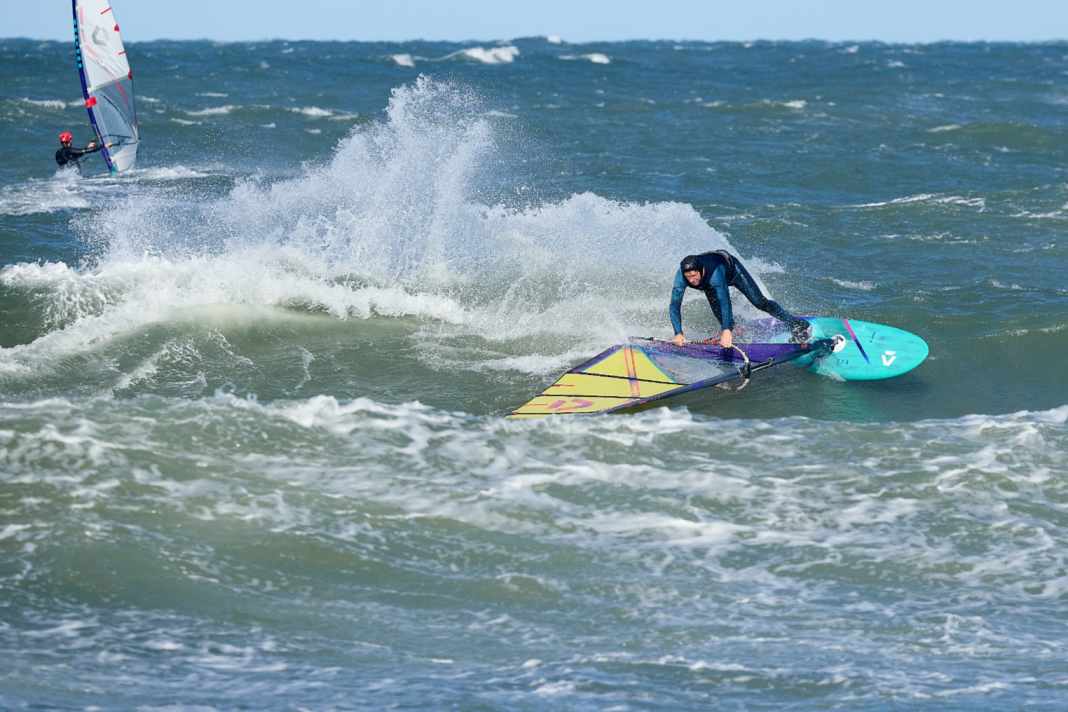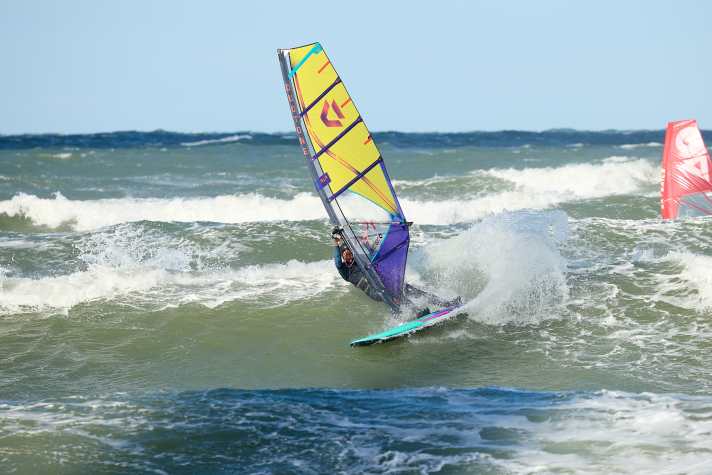Waveboards 2025: Wave surfing made easy - the Duotone Grip 3 95 put to the test
Surf Testteam
· 28.11.2024






The Grip 3 and Grip 4 models have formed the wave segment of the manufacturer Duotone for several years now. We tested where exactly the differences lie and whether the Grip 3 SLS is the better choice.
On land
At 95 litres, the test size of the Duotone Grip 3 is slightly shorter than its stablemate Grip 4, and the front and rear sections are visibly wider, resulting in a fairly parallel outline. Compared to this, the Grip 4 has significantly more curve around the edges. The Grip 3 offers extremely comfortable and, without exception, double-bolted foot straps, and the pads are also well padded and grippy. The mast track is short to save weight, but there is still enough room for individual tuning. The tail of the board has been given distinctive channels, the underwater hull has a slight V at the back and becomes increasingly flat and slightly double concave at the front. The Grip 3 is supplied with thruster fins measuring 18 and twelve centimetres in length (US/Slotbox).
On the water
With its 95 litres, the Grip 3 planes harmoniously and without a noticeable planing threshold. Thanks to the thruster setup and the slightly wider tail, you can put a lot of pressure on the fins to get a good angle to the wind and accelerate the board to a top speed suitable for jumping. Even when fully powered up, the Grip 3 is not a board that offers a lively, free ride, but rather a board that provides absolute comfort with its rail-like water position and excellent damping. If you want to upgrade here and achieve a freer water position, you can give the board a centre fin that is one to two centimetres longer. The edge grip is also absolutely convincing, regardless of whether you're jibing on the swell wave or speeding through the bottom turn, the Grip 3 always offers enough grip and control on the edge.
If you take the speed out a little or turn the radii more over the back foot, you can also elicit really good turning characteristics from the board, with which moderate surf waves can be expertly dissected. In addition, the Grip 3 holds its speed really well in moderate wave conditions with less wave thrust or motorised with large sails, which means you can always arrive at the lip of the wave with enough speed. Only when the waves become powerful or the wind strong does it become increasingly difficult to change the radius from wide to tight in order to hit the wave lip vertically. Experienced wave surfers will generally miss some potential for radical cutbacks and wave moves - but Duotone still has the Grip 4 in its programme.

Duotone Grip 3 SLS - the conclusion
The Duotone Grip 3 SLS 95 works thanks to its good planing performance and great control over a very wide wind range. The turning characteristics are solid, but not particularly radical - if in doubt, you can also choose this model one size smaller. Anyone who mainly windsurfs in moderate surf conditions, but also regularly goes out on the water in bump & jump conditions, will love the Grip 3. Conversely, anyone hoping for maximum turning potential and suitability for wave moves such as 360s and Takas from boards of this size should definitely opt for the Grip 4.
Jumping, gliding & control
-
-
Duotone Grip 3 - technical data
- Test model: Duotone Grip 3 SLS 95
- Volume: 95 litres
- Length: 222 cm
- Width: 60 cm
- Weight (surf measurement): 6.53 kilos
- Finns: 18/12 (US/Slotbox)
- Price: 2699 Euro
- Available sizes: 79/85/95/108 litres
- Contact: Duotone website
- Special features: -
